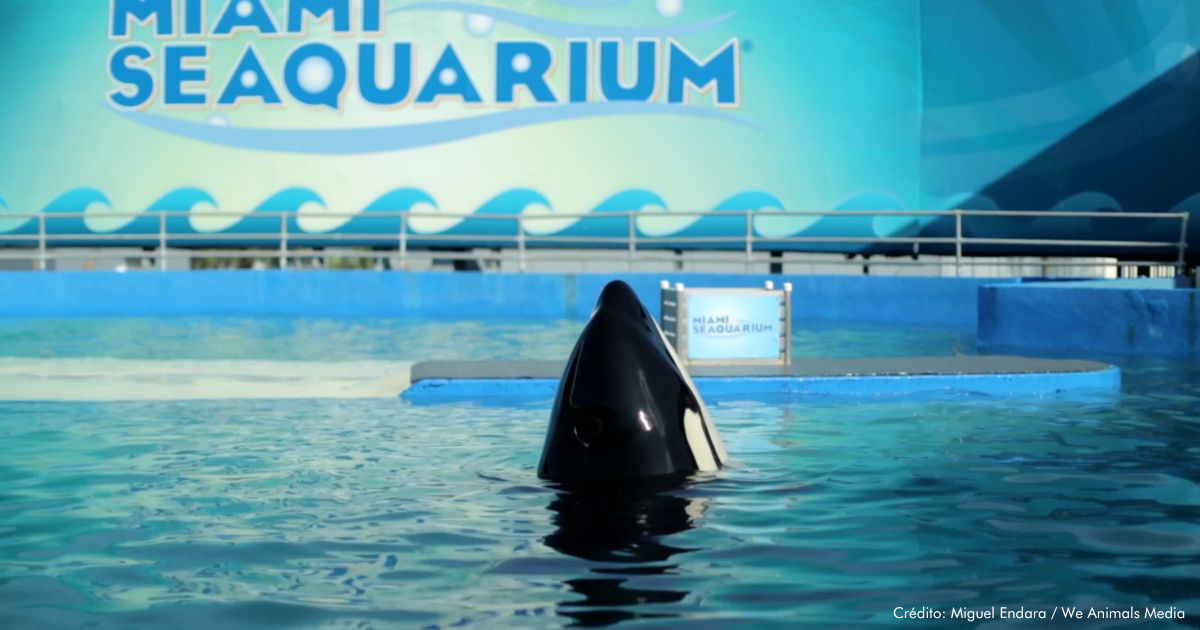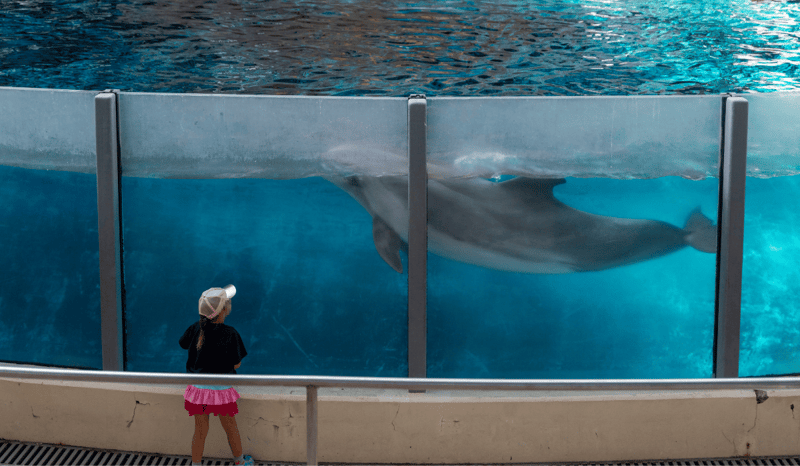
Discover the truth about marine mammals in captivity and why aquariums and swim-with-dolphin attractions harm dolphins, orcas, and other marine animals.
Marine mammals are some of the most intelligent, social, and wide-ranging animals on Earth. From orcas navigating vast oceans to dolphins communicating through clicks and whistles, these animals are built for freedom, not for life in a tank. Yet around the world, marine mammals in captivity are suffering, all for the sake of human entertainment.
It’s time we confront the cruelty of marine mammal captivity and end the exploitation of these incredible beings.
What Is a Marine Mammal?
Marine mammals are warm-blooded animals that live in or rely on the ocean for survival. This group includes whales, dolphins, porpoises, seals, sea lions, manatees, and even polar bears (though polar bears have very unique characteristics apart from other marine mammal species). They breathe air, give birth to live young, and most are highly social, forming complex communities much like humans.
But while they belong in the wild, many marine animals in captivity are confined in tanks or enclosures thousands of times smaller than their natural range, stripped of autonomy, and forced into unnatural routines.
Why Are Polar Bears Considered Marine Mammals If They’re So Different?
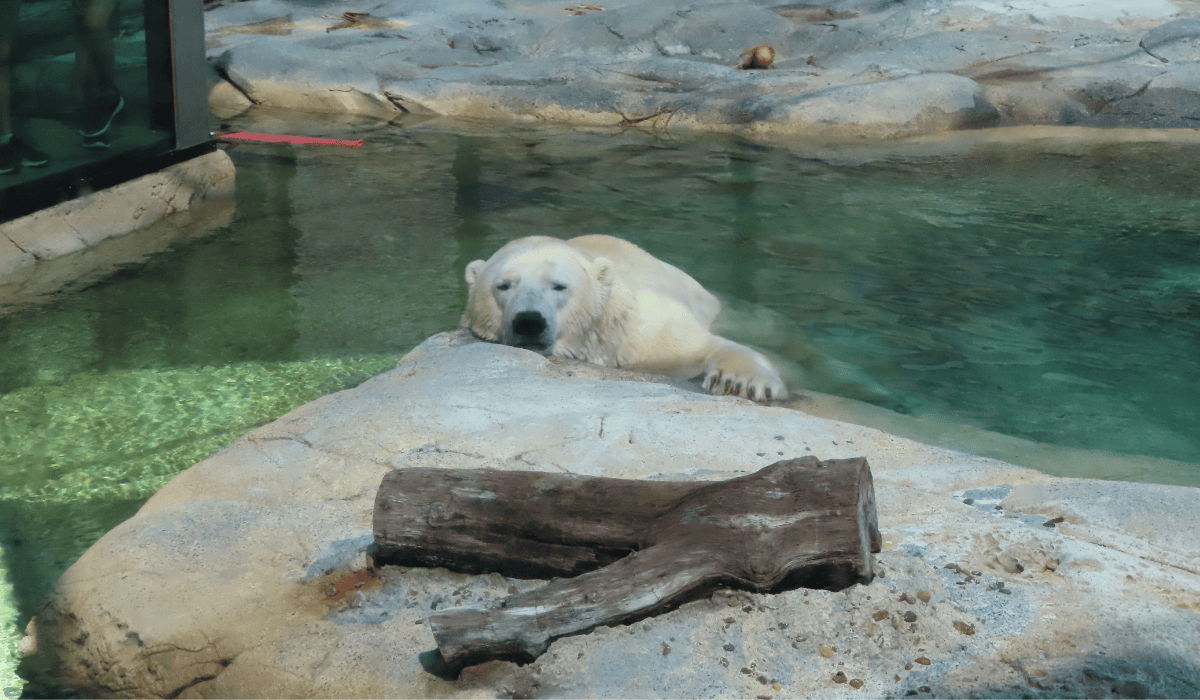
While they’re classified as a marine mammal because they spend the majority of their lives in the Arctic Ocean, specifically on sea ice, where they hunt seals and reproduce, polar bears are vastly different from the whales, dolphins, seals, sea lions, and other marine mammals they are grouped with. While they are excellent swimmers (and can swim long distances) and spend a majority of their time near or in icy waters, these “sea bears” are the only bears classified as marine mammals.
Unlike dolphins and seals, polar bears are mainly solitary animals—living and hunting alone apart from the time when females raise cubs or a pair are mating. In captivity, polar bears are forced to interact with other polar bears for extended periods of time, forcing captive bears to consistently make behavioral choices to give each other space in order to minimize aggression. In the wild, polar bears often have enormous ranges following the sea ice and can easily avoid each other as they generally like to avoid confrontation with other polar bears.
Marine Mammals Belong in the Wild—Here’s Why
Marine mammals are uniquely adapted to life in the ocean. They migrate across vast distances, communicate through complex vocalizations, and engage in deep social bonding within tight-knit pods. From dolphins and whales to seals and sea lions, these animals depend on the freedom of open water to thrive—something that marine mammals in captivity are tragically denied.
The history of marine mammal captivity dates back to the early 20th century, when dolphins and seals were first displayed in traveling shows and basic aquarium tanks. By the 1960s and 70s, marine parks like SeaWorld popularized the idea that these animals could entertain crowds with choreographed tricks and performances. This era sparked a booming industry that normalized keeping large, intelligent animals in confined tanks—all under the guise of education and family fun.
But what was once considered groundbreaking entertainment is now recognized for what it truly is: a legacy of animal suffering. Decades of research and whistleblower accounts have exposed the physical and psychological toll captivity takes on marine mammals. Among the most exploited are dolphins, whose suffering in captivity is especially well documented.
How Far Do Dolphins Travel in a Day?
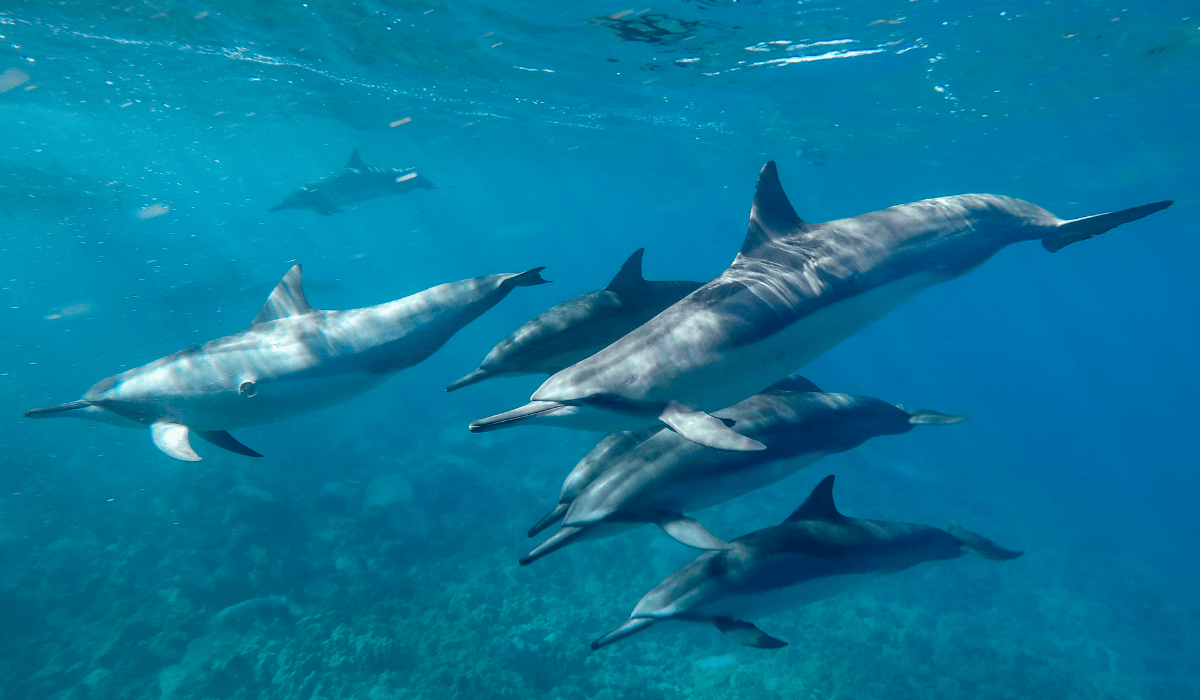
In the wild, dolphins can travel up to 60 miles a day, diving hundreds of feet deep, socializing with pods, and exploring dynamic underwater environments filled with natural stimuli. Their daily lives involve foraging, playing, and communicating in sophisticated ways. In captivity, they’re confined to shallow, artificial tanks that provide no meaningful enrichment. Unable to express natural behaviors, many dolphins resort to repetitive movements, a sign of psychological distress and boredom.
Are There Any Blue Whales in Captivity?
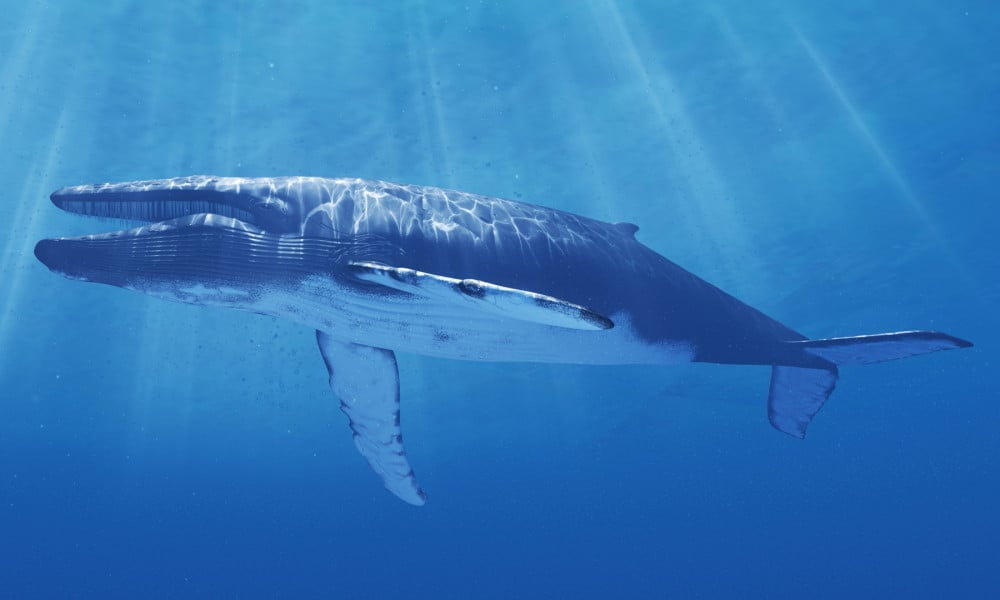
While dolphins are still bred and displayed in facilities worldwide, some marine mammals—like the blue whale—have been spared this fate. There are currently no blue whales in captivity—and for good reason. Blue whales, the largest animals on the planet, can grow up to 100 feet long and weigh nearly 200 tons. They travel thousands of miles during annual migrations and feed on massive quantities of krill using intricate lunge-feeding behaviors that require space and depth. Their sheer size and specialized needs make captivity not only impossible but also unthinkably cruel. Yet the same captivity model is still used on other species like dolphins, beluga whales, and orcas—species with similarly complex needs and a high capacity to suffer.
Captivity may masquerade as conservation or education, but it fundamentally ignores what these animals need to live healthy, fulfilling lives. Whether it’s the vast distances they swim, the deep social bonds they form, or their acute intelligence and emotional capacity, marine mammal captivity strips them of everything that makes them who they are.
By keeping marine animals in captivity, we’re not preserving their species—we’re destroying their spirits.
The Ethical Nightmare of Aquariums and Swim-With-Dolphin Attractions
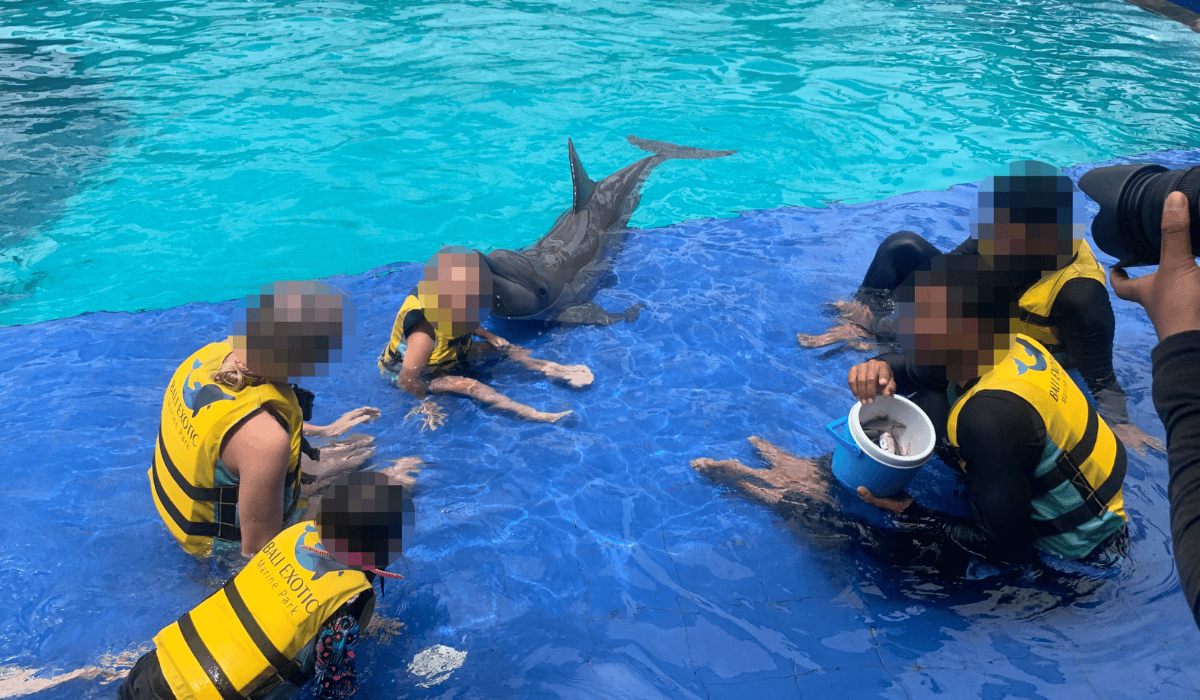
Are Aquariums Ethical? Are Aquariums Cruel or Inhumane?
Many people think aquariums are educational or harmless, but when it comes to marine mammals in captivity, aquariums are extremely unethical. Behind the scenes, these animals endure:
- Isolation from natural social groups
- Inadequate space to swim or dive
- Lack of stimulation, leading to abnormal behaviors like head bobbing or floating listlessly
- Forced performances and training using food deprivation
In short: Aquariums are inhumane.
Is Swimming With Dolphins Ethical?
No. These tourist attractions fuel dolphin abuse, whether the dolphins are born in captivity or ripped from the wild. Many are kept in tiny, chlorinated tanks, deprived of rest, and forced to interact with dozens of people daily—leading to stress, injury, and shortened lifespans.
Even "swim with dolphins in the wild" tours can disrupt their natural behaviors and harm the ecosystems they rely on.
The Tragedy of Orcas and Dolphins in Captivity
Why Orcas Should Not Be Kept in Captivity
Orcas are apex predators, swimming up to 100 miles a day, diving thousands of feet, and living in tight-knit family pods for life. In captivity, they:
- Live in tanks barely longer than their bodies
- Suffer from collapsed dorsal fins (a sign of poor health in captivity)
- Show signs of psychological distress
- Are often separated from family members
Captive orcas (such as Tilikum and Hugo) have also been linked to increased aggression—toward other orcas and humans alike—stemming from their unnatural and confined environments.
How Long Do Dolphins Live in Captivity?
In the wild, dolphins can live up to 50 years or more. In captivity, many die prematurely due to stress, disease, or injury. Captive breeding programs, often promoted as conservation, only serve to replenish animals for entertainment, not release them to the wild.
We Can and Must Do Better
Marine mammal captivity is not education. It’s not conservation. It’s exploitation.
Marine animals in captivity are deprived of the most basic freedoms they would enjoy in the wild. And as public awareness grows, support for this outdated industry continues to decline.
How You Can Help
- Don’t buy a ticket: Avoid aquariums and marine parks that keep dolphins, whales, and other marine mammals in captivity.
- Say no to swim-with-dolphin experiences
- Educate others about the cruelty behind the tank
- Support Wildlife Heritage Areas, not entertainment facilities
- Demand legislation that bans marine mammal captivity and trade
- Donate to help protect marine mammals.
Let’s Protect Marine Mammals and Keep Them in the Wild
Marine mammals were never meant to live in tanks. They belong in the ocean, with their families, free to roam, dive, and play.
The SWIMS Act, currently in Congress, would help end the breeding of some marine mammals by making it illegal to capture and breed orcas, belugas, false killer whales, and pilot whales for public display. Your email urging your Congress member to co-sponsor this vital legislation can make a big difference. Take action today!
